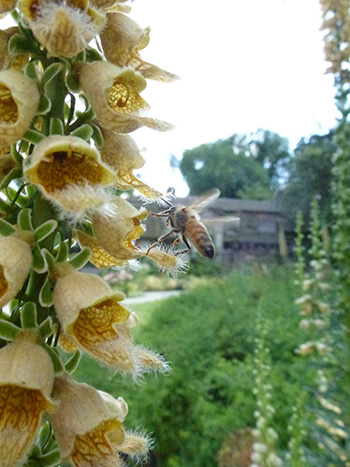
A Walk through the Wister Forest
One of the Five Best Preserved Areas in the Crum Woods
This February I took a walk through the Wister Forest with Crum Woods Restoration Assistant, Michael Rolli. Of the over 200 acres in the Crum Woods, five unique locations are prominent for their excellent state of preservation: the Wister Forest, Martin Forest, Trillium Slope, Skunk-Cabbage Hollow, and the Southern Red Oak Forest.
These sites have been subject to many of the pressures of natural areas such as invasive species competition, deer browsing, trash dumping, and trail use, yet have remained excellent spaces with mature trees, beneficial and endangered species, and wildlife value. Through subsequent blog articles, I will explore each space and share what I’ve learned about its special characteristics, plants, wildlife, and the struggles it faces. I encourage you to visit each beautiful area yourself!
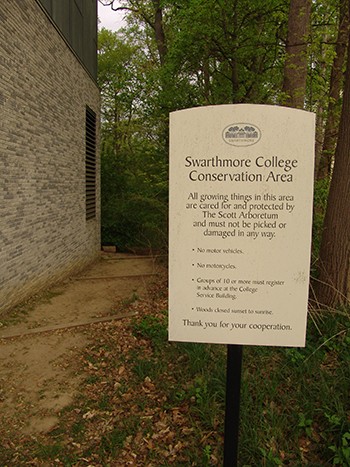
To access the Wister Forest, we entered the woods at the beginning of the Bartram Path near the Water Tower. photo credit: R. Robert
To access the Wister Forest, we entered the woods at the beginning of the Bartram Path near the Water Tower. As we descended the hill, we eventually reached the Wister Forest. This 26.9-acre piece of the forest was designed by John Wister to be composed of only Delaware County plants; however, non-native and invasive plants have crept into the forest over time.
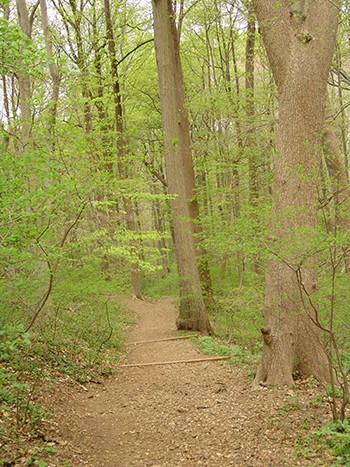
The forest understory today is dominated by our native spicebush (Lindera benzoin) because the deer do not enjoy the spicy taste of this shrub. photo credit: R. Robert
Although a Delaware County forest should have a robust understory of mapleleaf viburnum, arrowwood viburnum, blackhaw viburnum, and pagoda dogwood, the forest today is dominated by our native spicebush (Lindera benzoin) because the deer do not enjoy the spicy taste of this shrub.
As we descended the hill along the Evans Path, Mike pointed out the biggest northern red oak (Quercus rubra) and slippery elm (Ulmus rubra) in the Crum Woods. Other common woody species in the woods include red maple, black tupelo, dogwood, ash, hickory, tuliptree, cherry, American beeches, and a common pawpaw grove!
As we walked towards Crum Creek, we spotted several stands of mature eastern hemlocks (Tsuga canadensis) growing on a steep slope. The wooly adelgid, an insect which decimates eastern hemlocks, was found in Virginia in 1951 and since has spread quickly through the Eastern United States. Since the invasion of the wooly adelgid, mature stands of hemlocks are extremely rare.
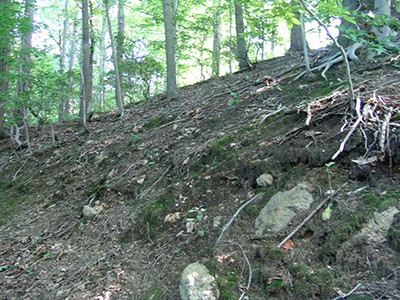
Because the Wister Forest features steep slopes, we noticed erosion near the creek. photo credit: R. Robert
Because the Wister Forest features steep slopes, we noticed erosion near the creek. Michael Rolli has been building brush bars to hold back some of the water that flows quickly down the hill to the creek.
Along the banks of the creek, we found many invasive plants. In 2011 parts of the forest were cleared to repair the sewer line, which caused the intrusion of several invasive species, including Japanese stilt grass and knotweed. The most immediate goal of reforestation is to increase canopy cover to prevent further germination of invasive plants.
Following the Valley Walk path, Mike and I walked along the creek and entered the woods again at the Alligator Path. While ascending the slope and making our way back towards the campus, we saw a few invasive ground covers which were planted on the campus and subsequently crept into the Crum Woods; English ivy, Vinca minor, and Japanese pachysandra.
Mike also pointed out the largest tree in the Crum Woods (excluding the Martin Forest), a tuliptree! With a diameter of at least 63 inches, this tree is truly massive and stretches well above all the nearby trees.
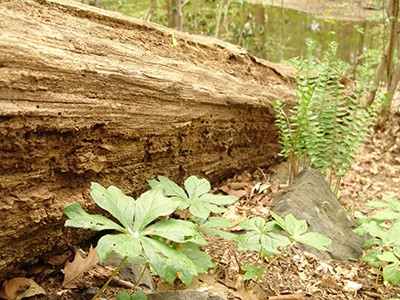
Early spring is a great time to explore this area as it displays mayapple, trout lily, bloodroot, and Jack-in-the-pulpit. photo credit: R. Robert
The Wister Forest is an interesting part of the Crum Woods with a mixture of cultivated understory plants and naturally occurring trees. Early spring is a great time to explore this area as it will display mayapple, trout lily, bloodroot, and Jack-in-the-pulpit.





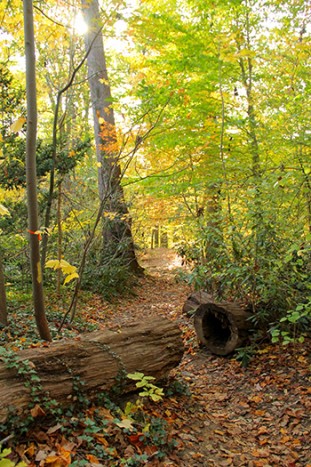
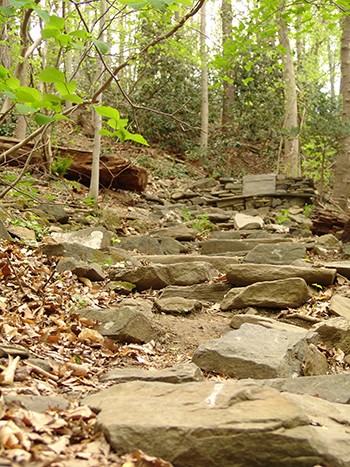
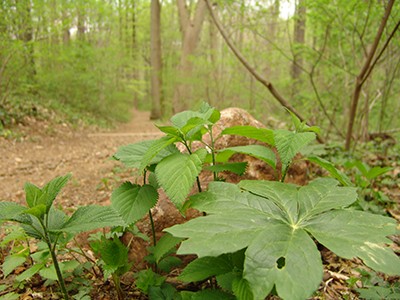
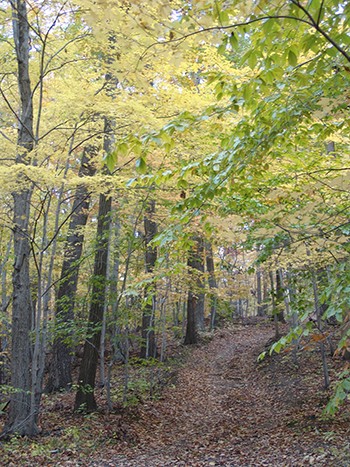
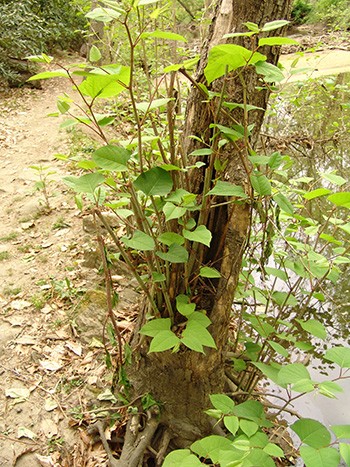
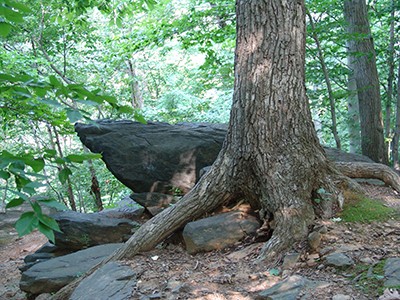
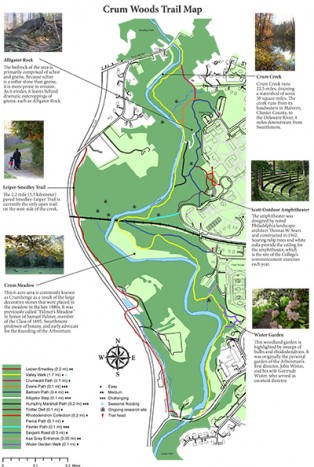
No Comments